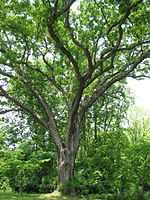Rochambeau French International School
1955 establishments in MarylandAEFE contracted schoolsEducational institutions established in 1955French-American culture in MarylandFrench international schools in the United States ... and 2 more
Private K-12 schools in Montgomery County, MarylandSchools in Bethesda, Maryland

Rochambeau The French International School of Washington DC is a private French international school in Montgomery County, Maryland, near Washington, D.C. It maintains its administrative headquarters and its secondary campus in Bethesda, and a joint preschool and elementary campus in Rockville.
Excerpt from the Wikipedia article Rochambeau French International School (License: CC BY-SA 3.0, Authors, Images).Rochambeau French International School
Montgomery Drive, Bethesda Pooks Hill
Geographical coordinates (GPS) Address Phone number Website External links Nearby Places Show on map
Geographical coordinates (GPS)
| Latitude | Longitude |
|---|---|
| N 39.013812 ° | E -77.113483 ° |
Address
Rochambeau, The French International School
Montgomery Drive
20814 Bethesda, Pooks Hill
Maryland, United States
Open on Google Maps






